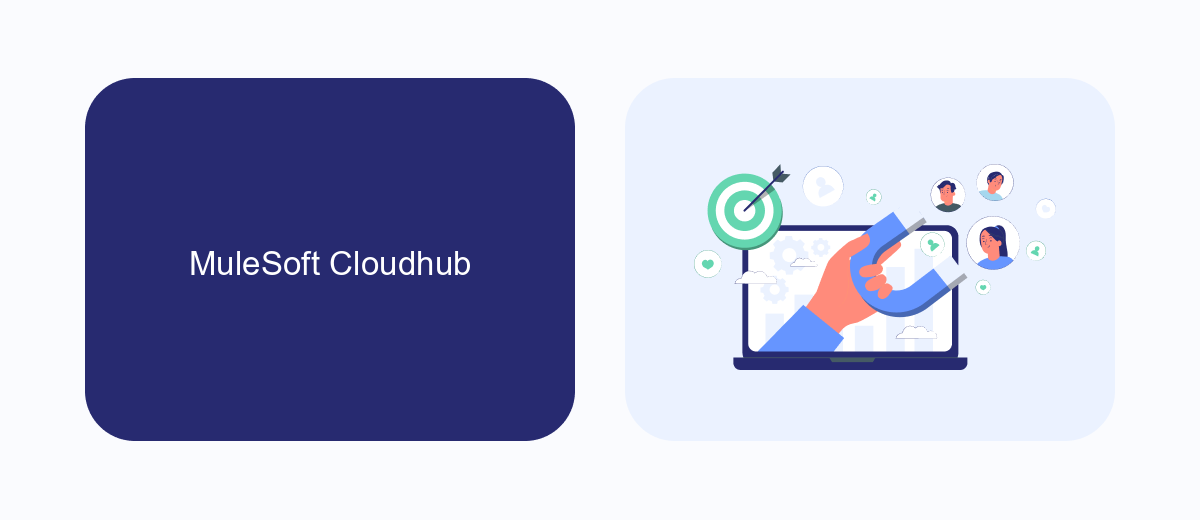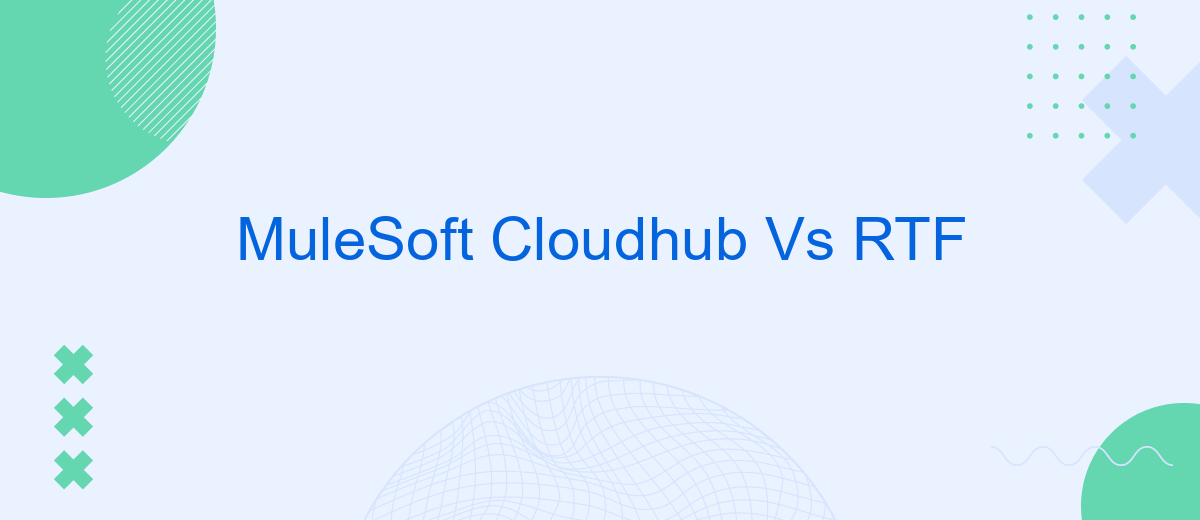In today's rapidly evolving technological landscape, businesses are increasingly turning to integration platforms to streamline operations and enhance agility. MuleSoft offers two prominent solutions: CloudHub and Runtime Fabric (RTF). This article delves into a comparative analysis of CloudHub and RTF, examining their features, benefits, and ideal use cases to help organizations make informed decisions on which platform best suits their needs.
Introduction
In the ever-evolving landscape of cloud integration platforms, businesses are constantly seeking the most efficient and cost-effective solutions to streamline their operations. MuleSoft offers two prominent options: CloudHub and Runtime Fabric (RTF). Each of these platforms has its own set of features and benefits, making it essential to understand their differences to make an informed decision.
- CloudHub: A fully managed, multi-tenant integration platform as a service (iPaaS) that simplifies the deployment and management of APIs and integrations.
- Runtime Fabric (RTF): A container-based service that allows you to deploy Mule applications on your own infrastructure, providing more control and flexibility.
Whether you're a small business looking to automate your workflows or a large enterprise needing robust integration capabilities, choosing the right platform is crucial. Services like SaveMyLeads can further enhance your integration processes by automating lead management and other critical tasks, making it easier to focus on your core business objectives. Understanding the strengths and limitations of CloudHub and RTF will help you select the best solution for your specific needs.
MuleSoft Cloudhub

MuleSoft CloudHub is a fully managed, multi-tenant, integration platform as a service (iPaaS) that allows businesses to connect their applications, data, and devices with ease. With CloudHub, organizations can deploy and manage APIs and integrations in a secure and scalable environment. This platform provides a comprehensive suite of tools for designing, deploying, and monitoring integrations, ensuring seamless connectivity across various systems and applications.
One of the key advantages of CloudHub is its ability to handle complex integration scenarios with minimal effort. For instance, businesses can leverage services like SaveMyLeads to automate the transfer of leads from various sources directly into their CRM systems, streamlining sales processes and improving efficiency. Additionally, CloudHub offers built-in security features, high availability, and robust performance, making it an ideal choice for enterprises looking to modernize their integration strategies.
RTF

Runtime Fabric (RTF) is an on-premises deployment option for MuleSoft that allows organizations to run Mule applications on their own infrastructure. It provides greater control over the environment, enabling customization and compliance with specific security requirements. Unlike CloudHub, RTF offers the flexibility to deploy applications on any cloud or data center, making it suitable for hybrid cloud strategies.
Key features of RTF include:
- Customizable deployment: Deploy Mule applications on any cloud or on-premises data center.
- Enhanced security: Meet specific security and compliance requirements by managing your own infrastructure.
- Scalability: Scale applications horizontally and vertically according to your needs.
- High availability: Ensure continuous operation with built-in failover and disaster recovery capabilities.
- Integration with existing systems: Seamlessly integrate with tools like SaveMyLeads to automate lead management and other workflows.
RTF is ideal for organizations that need the flexibility to manage their own infrastructure while leveraging MuleSoft's powerful integration capabilities. By combining RTF with services like SaveMyLeads, businesses can enhance their integration processes, ensuring efficient and automated workflows that meet their unique needs.
Comparison Table

When evaluating MuleSoft Cloudhub and RTF (Runtime Fabric), it's crucial to understand their distinct features and capabilities. Cloudhub is a fully managed, multi-tenant integration platform as a service (iPaaS), whereas RTF is a container-based service that allows deploying Mule applications across various environments, including on-premises, cloud, and hybrid setups.
Both platforms offer unique advantages depending on your specific needs. Cloudhub provides seamless scalability and simplified operations, making it ideal for businesses looking for a hassle-free deployment. On the other hand, RTF offers greater control and flexibility, suitable for enterprises needing to manage complex environments or comply with specific regulatory requirements.
- Deployment: Cloudhub (iPaaS) vs. RTF (Container-based)
- Scalability: Automatic in Cloudhub vs. Configurable in RTF
- Management: Fully managed in Cloudhub vs. Self-managed in RTF
- Flexibility: Limited to Cloudhub vs. Extensive with RTF
For businesses focused on setting up integrations quickly and efficiently, services like SaveMyLeads can be a valuable addition. SaveMyLeads simplifies the process of connecting various applications, allowing you to automate workflows without extensive technical expertise. This can complement the use of either MuleSoft Cloudhub or RTF, depending on your integration needs.
Conclusion
In conclusion, both MuleSoft CloudHub and Runtime Fabric (RTF) offer robust solutions for different integration needs. CloudHub is ideal for organizations seeking a fully managed, cloud-based environment that simplifies infrastructure management. It supports rapid deployment and scaling, making it a suitable choice for businesses looking to minimize operational overheads and focus on development and innovation.
On the other hand, RTF provides greater control and flexibility, allowing enterprises to deploy Mule applications across various environments, including on-premises and private clouds. This is particularly beneficial for organizations with complex regulatory requirements or those needing to maintain data sovereignty. Additionally, services like SaveMyLeads can further streamline integration processes by automating data transfers between different platforms, enhancing the overall efficiency and effectiveness of both CloudHub and RTF deployments. Ultimately, the choice between CloudHub and RTF should be guided by your specific business requirements and strategic goals.
FAQ
What is the primary difference between MuleSoft CloudHub and RTF?
Can I use MuleSoft CloudHub for on-premises deployments?
How does scaling work in CloudHub compared to RTF?
What kind of monitoring and management tools are available in CloudHub and RTF?
Is it possible to automate integration processes in both CloudHub and RTF?
Don't waste another minute manually transferring leads from Facebook to other systems. SaveMyLeads is a simple and effective tool that will allow you to automate this process so that you don't have to spend time on the routine. Try SaveMyLeads features, make sure that this tool will relieve your employees and after 5 minutes of settings your business will start working faster.
